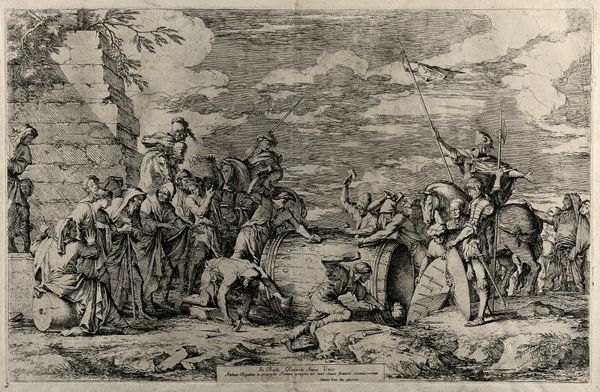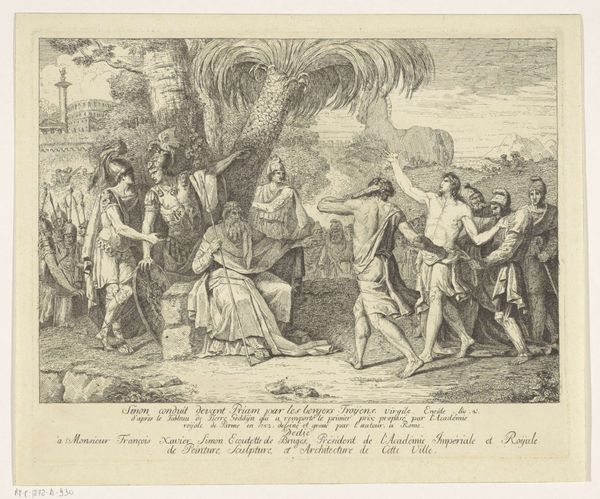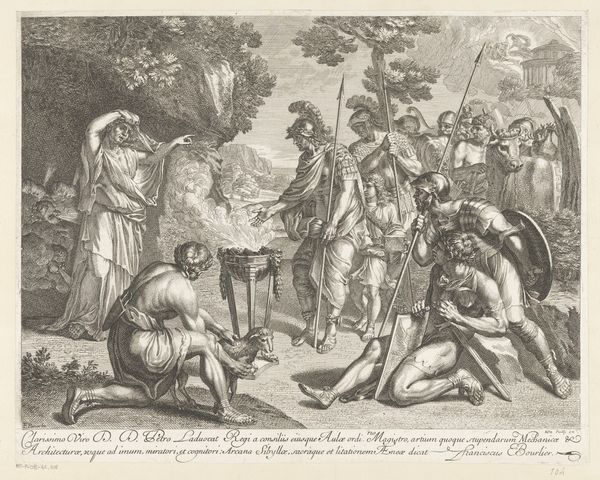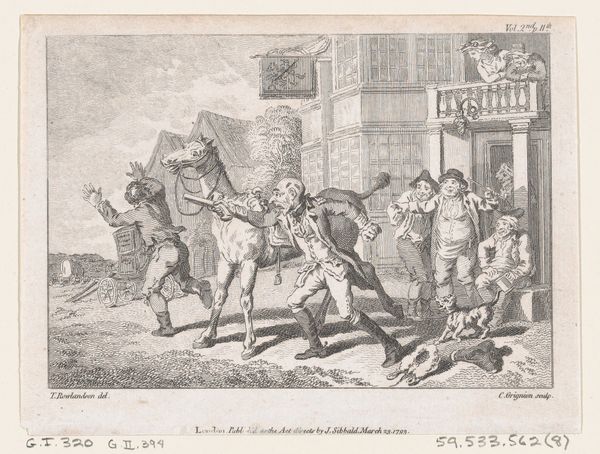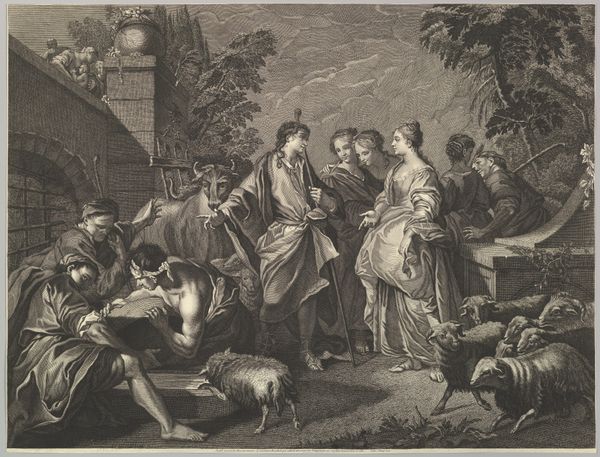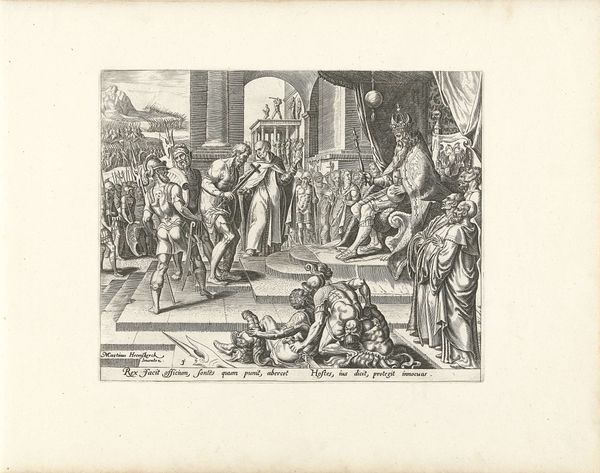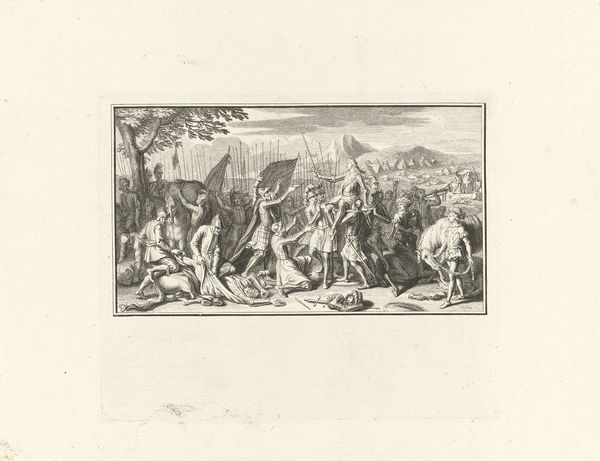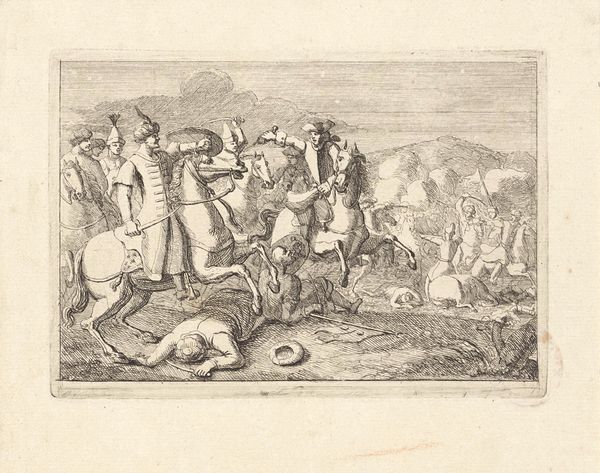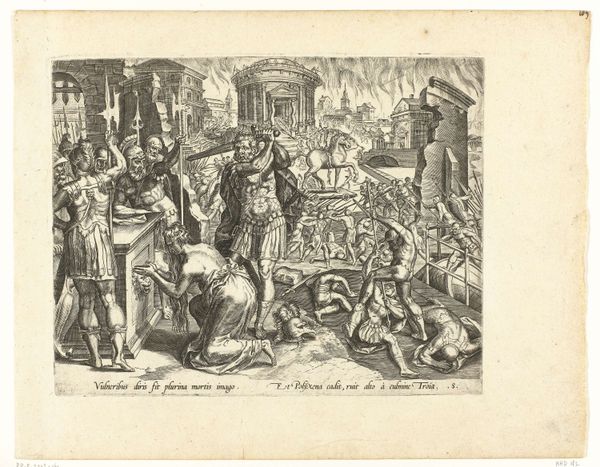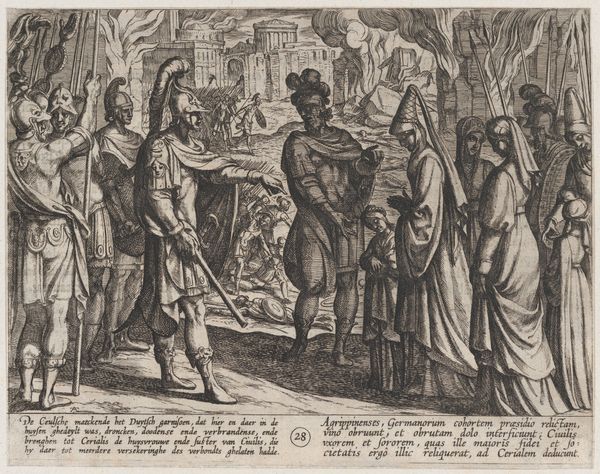
drawing, coloured-pencil, ink
#
portrait
#
drawing
#
coloured-pencil
#
narrative-art
#
pen sketch
#
pencil sketch
#
classical-realism
#
ink
#
pen-ink sketch
#
watercolour illustration
#
history-painting
#
prehistoric
#
academic-art
#
watercolor
Dimensions: overall: 30.6 x 40.9 cm (12 1/16 x 16 1/8 in.) Original IAD Object: 31 3/4" long; 14" wide
Copyright: National Gallery of Art: CC0 1.0
Editor: This is "Printed Historic Textiles," created around 1938, by Michael Trekur. It appears to be a mixed media piece, using drawing, colored pencil, and ink. The composition feels quite staged and the sepia tones give it an aged effect. What are your initial thoughts on its structure and form? Curator: Structurally, observe the clear division of space: foreground filled with figures, background depicting architectural structures which establishes a distinct contrast between the colonizers and colonized. Note the use of line—it's predominantly linear, defining shapes and forms with precision, but lacking a sense of organic blending. How does this linear approach impact your reading of the depicted interaction? Editor: I see how the stark lines emphasize the separateness, like each group is contained within its own distinct outline. What about the spatial arrangement—the way the artist positions figures and buildings? Curator: The artist employs a somewhat flattened perspective. The buildings seem almost stacked behind the figures rather than receding into space convincingly. It seems the architecture almost creates a stage like presence that flattens and foregrounds the interaction with equal emphasis.. Do you find this impacts your interpretation of depth, particularly regarding narrative depth and complexity? Editor: It makes the whole scene feel rather artificial, almost like a theater backdrop. This artifice then affects how I interpret the interactions of those represented. It doesn't read as real. Curator: Precisely. The lack of atmospheric perspective reduces a feeling of reality; consider then what purpose the artist wants to convey with a piece seemingly more representational than expressive? It appears the artist focuses less on raw depiction and perhaps more to offer an aesthetic evaluation or moral. Now consider how the medium contributes to such artistic goals. Editor: This focus on the structural elements gives me a completely new way to look at how narrative is built in the piece. Thank you. Curator: Indeed. By closely examining its intrinsic elements we have begun to uncover some complexities that lie beneath the seemingly representational work.
Comments
No comments
Be the first to comment and join the conversation on the ultimate creative platform.

